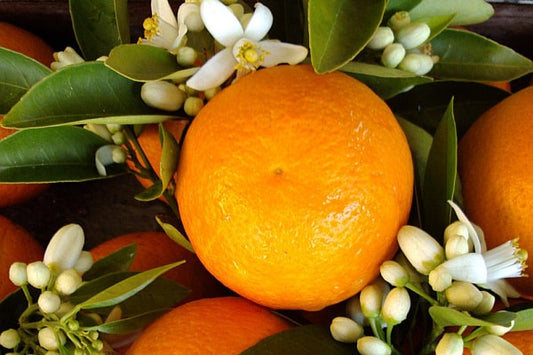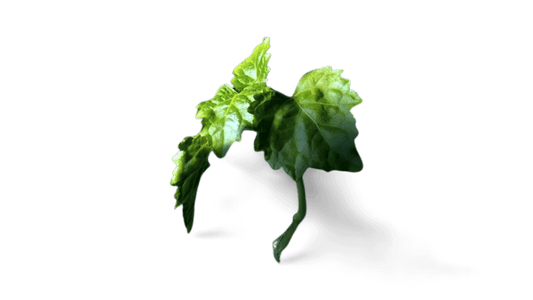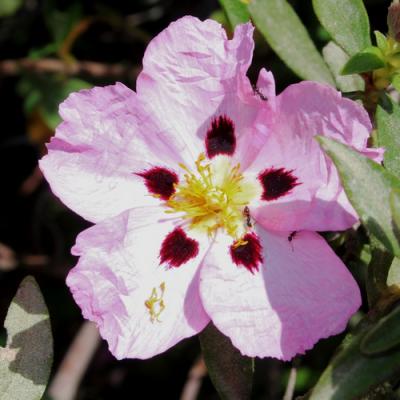No products found
Use fewer filters or remove all
Plumeria Fragrances
Explore our collection of plumeria fragrances. Shop plumeria perfumes that will captivate your senses.Pitahaya Fragrances
Experience the invigorating scents of pitahaya fragrances. Discover the best pitahaya perfumes and immerse yourself in a refreshing aroma.Popcorn Fragrances
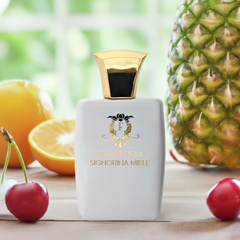
From this collection Signorina Miele is Dior Miss Dior Chérie dupe
Indulge in the captivating popcorn fragrances. Explore the best popcorn perfumes and let their enchanting scents transport you.Propolis Fragrances
Discover the delightful scents of propolis fragrances. Shop best propolis perfumes online and add a touch of elegance to your fragrance collection.Praline Fragrances
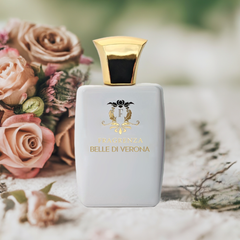
From this collection Belle di Verona is Lancome La Vie est Belle dupe
Immerse yourself in the world of praline fragrances. Experience the best praline perfumes for men and discover unique and captivating scents.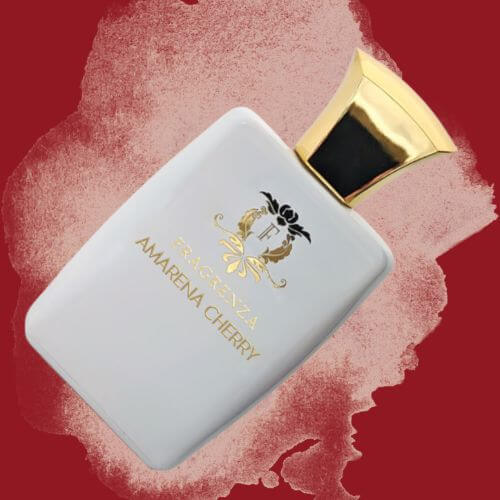
Amarena Cherry
Obsessed with cherry? If you want to really amp up the cherry scent, this Tom Ford Lost Cherry dupe will give Lost Cherry a run for its money. Black cherry, cherry syrup, and cherry liqueur all mingle together for an indulgent cherry overdose that’s complemented by notes of almond, tonka bean, Turkish rose, and jasmine sambac.
Citrus Smells
Citrus maxima Other names: Pummelo, Pommelo, Shaddock
Collapsible content
Description
Grapefruit originated far from the historic homeland of citrus - northern China. Its mother is pomelo lat. Citrus maxima. Presumably, pomelo seeds were brought to the Caribbean by an English captain Philip Shaddock, a participant in the British campaign in the West Indies, which took place in the mid-17th century. . The pomelo has large round fruits that are slightly pointed at one end, reminiscent of a pear, and the fruit has a thick skin. It is the largest of citrus fruits. One of the names of grapefruits is grapefruit deriving from Tamil pampa lim��su large citrus fruit that Portuguese sailors captured as pomposos lim�es, then it turned into pompelmousse, then pompelmoes in Dutch. In English, it turned into pomelo, pummelo or pumelo. The father of grapefruit is the famous sweet orange lat. Citrus x sinensis, or rather its variety naturalized in Jamaica. Apparently the hybrid happened by accident. Grapefruit was first described by Welsh cleric and naturalist Griffith Hughes. In his book The Natural History Of Barbados 1790, which is a monumental work of almost four hundred pages, he calls grapefruit a forbidden fruit and claims that locals consider it one of the Seven Wonders of Barbados. The book was highly regarded by Carl Linnaeus, the Swedish naturalist known as the father of modern taxonomy, but still others viewed it as unreliable and fraudulent. Grapefruit gets its modern name from its appearance - grapefruits grow in clusters, like grapes. For a long time grapefruit and pomelo had not been distinguished, they were considered the same species called shaddock in honor of the aforementioned British sailor. Botanists did not begin to recognize their difference until the 1830s, and a century later, after 1940, the origin of grapefruit was established and it was given an official Latin name - Citrus x paradisi. Grapefruit made its way to America in the 1820s and quickly gained popularity. At the beginning of the 20th century, pink varieties appear they are generally sweeter. Grapefruit essential oil is obtained by pressing or distillation, mainly from fruit peels of the Duncan variety - light yellow fruits with very light flesh. Now in Florida and Texas, they grow many varieties of grapefruit such as Oro Blanco, Ruby Red, Pink, Rio Star, Thompson, White Marsh, Flame, Star Ruby, Duncan, Pummelo HB, etc. As a result of reproduction, the grapefruit became increasingly sweet, losing the bitterness and astringency of the original fruit;the skin has become thinner, the seeds - smaller. It was reflected in the essential oil of the zest which became sweeter, of a lesser character. The smell of grapefruit essential oil is quite similar to that of sweet and bitter oranges, as well as lemon. In his book Le Journal d'un nez: a year in the life of a perfumer, Jean-Claude Ellena regrets that natural grapefruit essential oil smells too close to orange, lacking the character of fresh grapefruit. The main ingredient in grapefruit essential oil is limonene. Limonene is the basic ingredient in virtually all citrus essential oils, with the possible exception of bergamot. Limonene is certainly responsible for the juicy and uplifting freshness of citrus;nonetheless, it hardly plays a significant role in creating a citrus scent. Frankly, in order to create a brighter, more compelling citrus ingredient, growers are reducing the amount of limonene in the oil. It is usually made by distilling it under pressure at a low temperature, although the advanced fractionation methods are much more sophisticated for a simple explanation. These types of oils, as you probably know, are called folded: for example, the designation 5x fold or 5-fold means that such an oil must be diluted 5 times with limonene to return to its original unfractionated version. Aldehydes are an important part of any citrus essential oil. It would be a mistake to think of them as something exclusively synthetic - the amount of aldehydes in some citrus oils is significantly higher than in Chanel # 5. In grapefruit essential oil there is a usual complex saturated aldehydes in which substances with the same number of carbon atoms predominate: mainly octanal 0. 3-0. 8 percent, decanal 0. 3-0. 6 percent and dodecanal approximately 0. 15 percent. Double bonded aldehydes play an important role in grapefruit odor: nonenal, decenesal, decadienal, sinensal isomers, and even trans-4, 5-epoxy-cis-2-decenal, widely known for its metallic odor. bloody . An important characteristic of grapefruit's scent is its sulphurous tropical character, and its compound is para-menth-1-en-8-thiol aka grapefruit mercaptan. It has an extremely intense smell - its grapefruit essential oil content is less than one part in a billion;however, it is responsible for the very characteristic exotic fruity note of grapefruit. Although grapefruit mercaptan is a fairly low molecular weight sulfur-containing compound, surprisingly in its pure form it does not smell like hellish sulfuric miasma or rotten garlic, but has a pleasant grapefruit character. quite recognizable. The more observant of you have probably already noticed that grapefruit mercaptan is a mercapto analogue of terpineol, which makes up about 0. 2 percent of grapefruit essential oil and about 8 percent of all the aromatic ingredients in grapefruit juice. . The scent of grapefruit has another very important characteristic that distinguishes grapefruit from the majority of other citrus fruits. It is a particularly bitter herbaceous woody aspect, reminiscent of vetiver. It is mainly determined by nootkatone, the amount of which in oil can vary from 0. 5 to 2 percent. Nootkatone takes its name from the Nootka cypress Alaskan cedar, from which it was extracted the essential oil. You can smell the nootkatone in Corps Volatils Synthetized Citrus, Sergey Borisov recently wrote about this brand. Cyclic esters, in particular furan derivatives, contribute significantly to the scent of grapefruit. Linalool oxide makes 12 percent of the aromatic composition of grapefruit, it is the second most important component after limonene. Linalool oxide provides an herbaceous floral green undertone. Another important component is 3, 6-dimethyl benzofuran: it has a fairly low odor threshold, so its participation in the general grapefruit smell is quite large - it adds a minty and resinous undertone to the grapefruit. The color of grapefruit correlates directly with its olfactory composition: white grapefruit has a higher amount of nootkatone and other minor components, while a more intensely colored grapefruit contains less of these substances, but a higher content of aldehydes. There are many synthetic materials that can help the perfumer to create a grapefruit profile. Often there is a certain familiar pattern in their structure - Nootkatone / Vetivone / Valencene: The fragrant grapefruit has many facets: citrus, sulphurous blackcurrant, fruity rhubarb, woody, green. Each of them has its own spectrum of shades: dimethylcathinone and fructalate have a very fresh, lemony smell;floropal and rubafuran have a rhubarb scent, green, with a touch of marijuana;khusinil, vigoflor and rhubofix share a distinct woody character, reminiscent of vetiver. An important tropical undertone of grapefruit is often conveyed by the addition of sulfur compounds, but there are other options, for example paradisamide. It has a surprisingly light, bright and exotic ester character, while being devoid of an unpleasant feline effect. Its scent is also quite persistent, which is a plus. Perhaps grapefruit isn't one of the most popular citrus notes in perfumery. In the 1990s, grapefruit was widely applied to the citrus top notes of men's fragrances to avoid a direct reference to a typical cologne. The nootkatone in grapefruit already suggests an obvious grapefruit-vetiver rhyme. However, due to its very high price, nootkatone had often been imitated by rhubofix and other similar materials. And yet, there are fragrances created to purposefully emphasize the wonderful scent of grapefruit, or nearby pomelo.
-
Our best sellers.
-
Adeline PDM Delina dupe Better Peach Tom Ford Bitter Peach dupe Chloris Gardenia Gucci Flora Gorgeous Gardenia dupe Fearless Love Kilian's Love, Don't Be Shy dupe Selvaggio Dior's Sauvage dupe Addict Noir YSL's Black Opium dupe Empress D&G's L'Imperatrice dupe Divino Bleu de Chanel dupe Lo amo J’Adore Dior dupe Pretty Girl Carolina Herrera's Good Girl dupe



